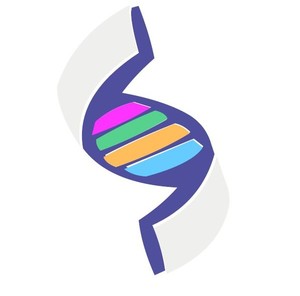Development of biologicals has experienced steady growth over the past three decades. Expiration of patents on many originator biologicals, such as insulin, human growth hormone and erythropoietin, has opened the door for the development of biosimilars. The high cost of biologicals, however, has limited their accessibility, particularly in developing countries. Biosimilars offer much-needed affordability and hence improved accessibility. Global health agencies, such as the World Health Organization, are engaged in developing a prequalification program in order to help countries that do not have strong regulatory systems [1].

Latin America is a region full of opportunities when it comes to similar biotherapeutic products (SBPs). Due to the high expertise and development of SBPs in Latin America, many local and foreign pharmaceutical companies are showing interest in entering the Latin American market for the development and commercialization of SBPs both locally and at the international level. Latin America is considered to have a hub of flourishing industries with its own research, development, production and commercialization capacity [2]. The three most prominent markets for SBPs in Latin America include Argentina, Brazil and Mexico, and of these Brazil is at the forefront due to its large population and domestic expertise. Mexico, Argentina and Brazil have the largest number of approved similar biotherapeutic products (SBPs), with 44 products approved in total. In the Andean community of nations (which includes Bolivia, Colombia, Ecuador, and Peru), 14 SBPs have been approved. On the other hand, in the MERCOSUR trade bloc (which includes Chile, Paraguay, Uruguay and Venezuela) 18 SBPs have been approved [3]. According to a recently published market analysis, the Latin American market for SBPs was valued at US$517 million in 2018 and is expected to reach US$3,915 million by 2025 at a compound annual growth rate (CAGR) of around 33% during 2018–2025 [1].
In the context of the regulatory framework of SBPs in Latin America, the regulatory authorities have begun establishing well-defined and standardized pathways enabling a SBP to receive market registration. Most of the Latin American countries tend to adopt guidelines based on accepted international regulations. Governments of Latin American countries are promoting the entry of new SBPs and controlling healthcare spending linked to the increasing prevalence of diseases like cancer, diabetes and other chronic conditions. Most of the established biological players are attempting to penetrate the growing Latin American biologicals’ market. The regulation of SBPs in Latin America varies widely among different countries and the region is moving towards increasing standards of regulation for these products [1].
Brazil has completed 10 years of the productive development partnership (PDP) program [4]. The first group of molecules that have been developed under the partnership were launched in 2019 and now the stakeholders are assessing how to increase health coverage and access to assure the benefits of these SBPs and the cost reduction they provide [5]. In the case of Mexico, local SBP producers are requesting greater governmental support to help them compete against established multinational manufacturers [6]. The Latin American market for SBPs is likely to continue to grow at a fast rate, making it attractive for global biosimilar producers. However, to improve the affordability and accessibility of this class of products, the governments need to make their regulatory systems more robust and also encourage domestic players to become established. In the near future, to enhance the approval and safe use of SBPs across Latin America efforts are required by the regulatory authorities in the areas mentioned below [1, 7]:
- Enhanced training of regulatory authorities on how to evaluate SBPs.
- Developing the necessary infrastructure to evaluate the analytical and clinical information required for each registration.
- Improved pharmacovigilance and training of regulatory staff.
- Establishment of a region-wide working group to share regulatory experience and plans related to SBPs [the Pan American Health Organization (PAHO)].
- Setting up a dedicated portion on the PRAIS website (PAHO’s Regional Platform on Access and Innovation for Health Technologies) to promote discussion on SBPs.
- Comparative quality studies on the safety and efficacy of SBPs.
- Establishment of the balance between the risks and benefits versus the originator biological.
Finally, the expansion of SBP companies in Latin America has benefitted the market for SBPs, since it adds more key players, thereby increasing competition, which will lead to more affordable drug prices for patients and more alternatives for expensive drugs at a global level.
Conflict of interest
The authors of the research paper [1] did not provide any conflict of interest statement.
Abstracted by Professor Anurag S Rathore, Coordinator, DBT Center of Excellence for Biopharmaceutical Technology, Department of Chemical Engineering and Dean, Corporate Relations at the Indian Institute of Technology, New Delhi, India.
Editor’s comment
European Medicines Agency regulatory requirements ensure the same high standards of quality, safety and efficacy for biosimilars as for originator biologicals, and also include a rigorous comparability exercise with the reference product but they are not universally accepted by regulatory bodies outside of the European Union (EU). It should be noted that ‘similar biotherapeutic products’ approved in Latin America might not have been authorized if they had been subjected to the strict regulatory processes required for approval of biosimilars in the EU.
Readers interested to learn more about similar biotherapeutic products in Latin America are invited to visit www.gabi-journal.net to view the following manuscripts published in GaBI Journal:
Biosimilarity in Latin America
GaBI Journal is indexed in Embase, Scopus, Emerging Sources Citation Index and more.
Readers interested in contributing a research or perspective paper to GaBI Journal – an independent, peer reviewed academic journal – please send us your submission here.
GaBI Journal Citation Impact
1.9 – CiteScore 2020 (calculated on 5 May 2021)
1.6 – CiteScoreTracker 2021 (Last updated on 4 June 2021)
Submit a manuscript to GaBI Journal
Related article
The biosimilars market in Latin America: a summary
| LATIN AMERICAN FORUM The brand-new section the ‘Latin American Forum’ on GaBI has been launched. The objective of this new section is to provide you with all the latest news and updates on developments of generic and biosimilar medicines in Latin America in Spanish. View this week’s headline article: La Epoetina biosimilar en Estados Unidos – obstáculos y recomendaciones Browse the news in the Latin American Forum! Register to receive the GaBI Latin American Forum newsletter. Inform colleagues and friends of this new initiative. LATIN AMERICAN FORUM Se ha lanzado la nueva sección del ‘Foro Latinoamericano’ sobre GaBI. El objetivo de esta nueva sección es brindarle las últimas noticias y actualizaciones sobre desarrollos de medicamentos genéricos y biosimilares en América Latina en español. Vea el artículo principal de esta semana: La Epoetina biosimilar en Estados Unidos – obstáculos y recomendaciones Explore las noticias en el Foro Latinoamericano! Regístrese para recibir el boletín informativo GaBI Latin American Forum. Informe a colegas y amigos sobre esta nueva iniciativa.
|
References
1. Rathore AS, Bhargava A. Regulatory considerations in biosimilars: Latin America region. Prep Biochem Biotechnol. 2021;51(2):201-6.
2. Garcia R, Araujo DV. The regulation of biosimilars in Latin America. Curr Rheumatol Rep. 2016;18(3):16.
3. Ortiz-Prado E, Ponce-Zea J, Vasconez JE. Current trends for biosimilars in the Latin American market. Generics and Biosimilars Initiative Journal (GaBI Journal). 2020;9(2):64-74. doi:10.5639/gabij.2020.0902.011
4. GaBI Online - Generics and Biosimilars Initiative. Samsung Bioepis to supply Brenzys to Brazil under production development partnership [www.gabionline.net]. Mol, Belgium: Pro Pharma Communications International; [cited 2021 Jul 2]. Available from: www.gabionline.net/Biosimilars/News/Samsung-Bioepis-to-supply-Brenzys-to-Brazil-under-production-development-partnership
5. Golgher D, Rodrigues R, Massafera R. Gauging the future of biosimilars in Brazil. Genetic Engineering & Biotechnology News. 9 October 2015. Engineering & Biotechnology News.
6. López-Morales CA, Tenorio-Calvo A, Cruz-Rodríguez R, et al. Regulatory Pathway for Licensing Biotherapeutics in Mexico. Front Med (Lausanne). 2018;5:272.
7. Cucchiaro FA. Biosimilars are coming to LATAM. Pharma Manufacturing. 3 Jul 2019.
Permission granted to reproduce for personal and non-commercial use only. All other reproduction, copy or reprinting of all or part of any ‘Content’ found on this website is strictly prohibited without the prior consent of the publisher. Contact the publisher to obtain permission before redistributing.
Copyright – Unless otherwise stated all contents of this website are © 2021 Pro Pharma Communications International. All Rights Reserved.








 0
0











Post your comment